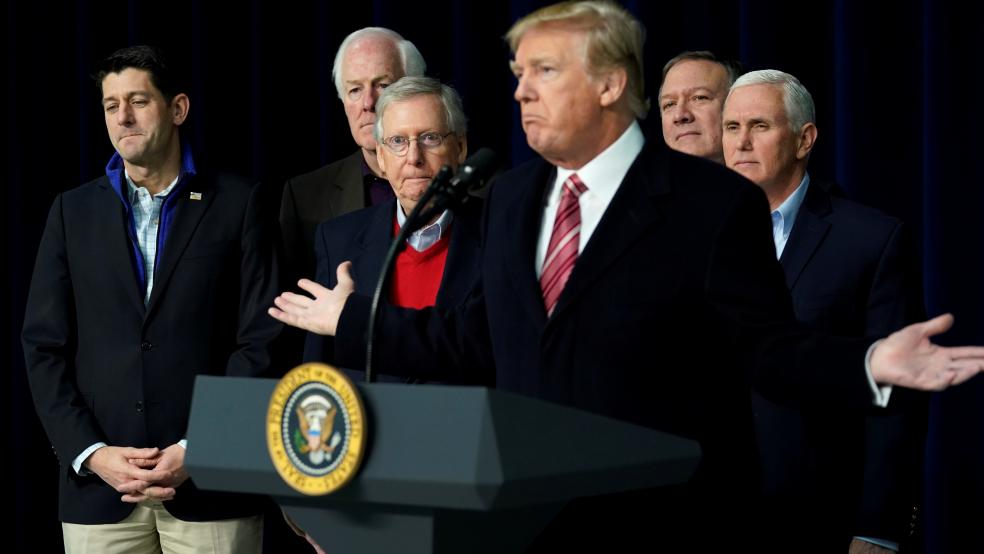Kevin Hassett, chair of President’s Trump’s Council of Economic Advisers, said this week that contrary to what many critics are saying – see here, here and here, for example – he doesn’t think the economy is coming off a short-term “sugar high” produced by the Republican tax cuts. Instead, Hassett said that he believes the economy is on a path that will produce a long-term increase in productivity, sustained higher growth and, eventually, higher wages.
"The story of the tax cuts is they cut the cost of capital, which should lead to higher capital spending,” Hassett told Politico’s Ben White. “If we continue to see a capital spending boom, then productivity goes up and wages go up and you can sustain higher consumption because you increase supply. And all that can happen without causing runaway inflation."
However, The Wall Street Journal’s Greg Ip cast fresh doubt on the White House’s optimistic view of the economy Wednesday, arguing that it’s not clear yet that the GDP growth of more than 3 percent we’ve seen over the last two quarters is sustainable. In fact, there’s good reason to think the growth will not be sustained, Ip said, citing three factors:
* The economy will run out of new workers: The unemployment rate is at a 49-year low of 3.7 percent, and at the current pace of improvement the rate would go negative in eight years, which is impossible. Even with thousands of workers coming off the sidelines and back into the labor force, the economy will face a shortage of workers at some point, Ip said, dragging on growth.
* Demand-side boost will fade, supply-side boost looking weak: The tax cuts provided some boost in demand as consumers found a bit more money in their paychecks, but that increase won’t repeat itself. And while new rules have increased capital spending, the boost has been modest and may have already fizzled. “Excluding mining, oil and gas, business spending on structures such as offices, factories and stores did jump in the first quarter, perhaps because of the tax cut, but then cooled,” Ip wrote. “Spending on equipment doesn’t seem to have responded: It was solid from early 2017 but has weakened in recent months.”
* Financial markets appear to be plateauing: Stocks are unlikely to repeat the big gains of the last year and interest rates are climbing, creating a drag on household spending. Financial conditions are now a net negative for economic growth, Ip said, citing a recent estimate from Goldman Sachs.
In the long run, there are factors that could theoretically push GDP growth above its current 2 percent long-term trend, Ip said, including robotics and artificial intelligence. “But absent another tax cut, oil boom, bull market or some other stroke of luck, a slowdown from the last 12 months’ 3% pace seems inevitable.”




